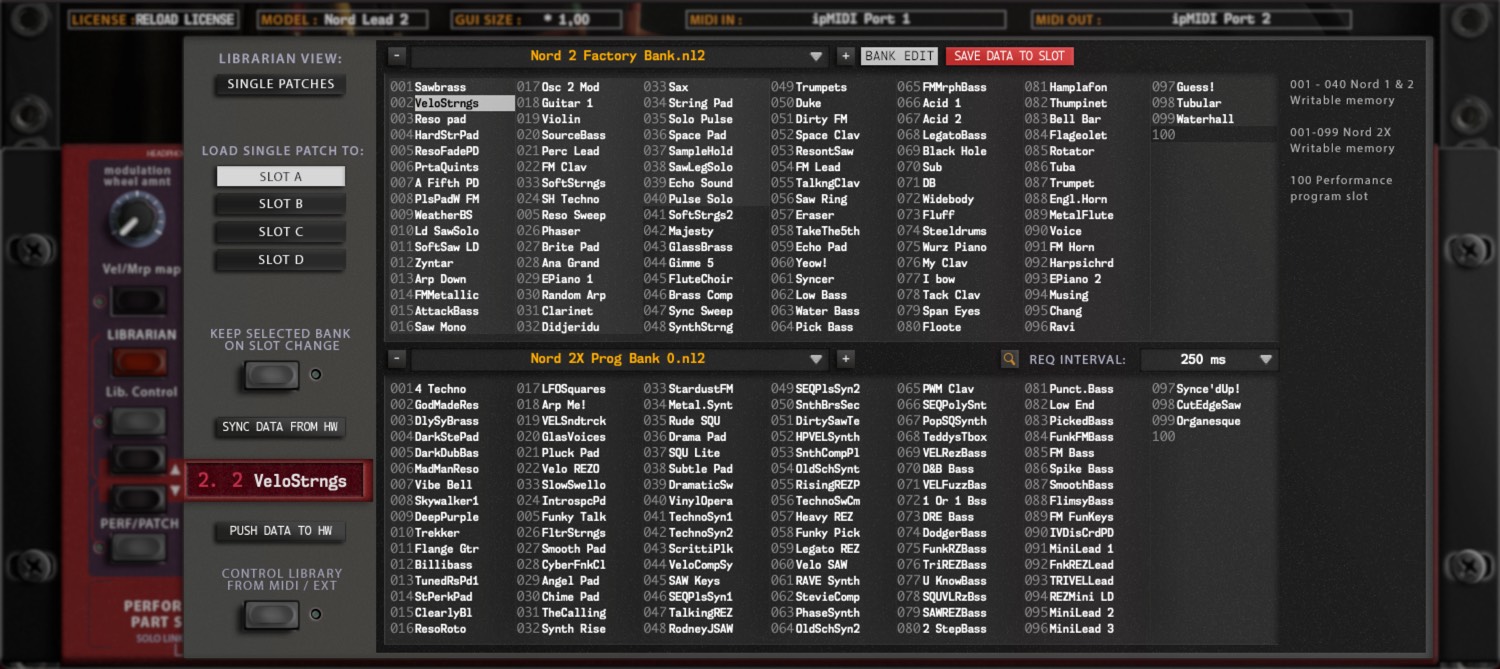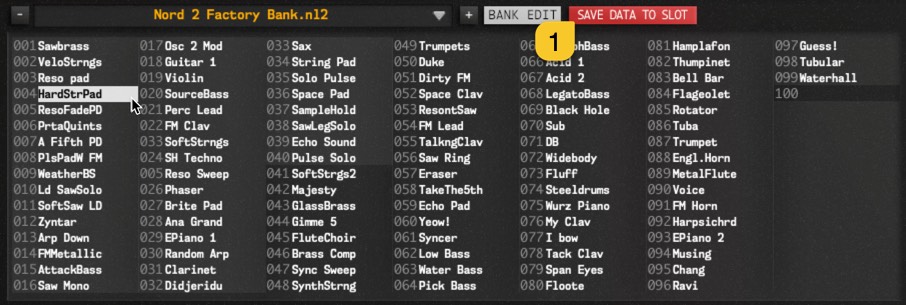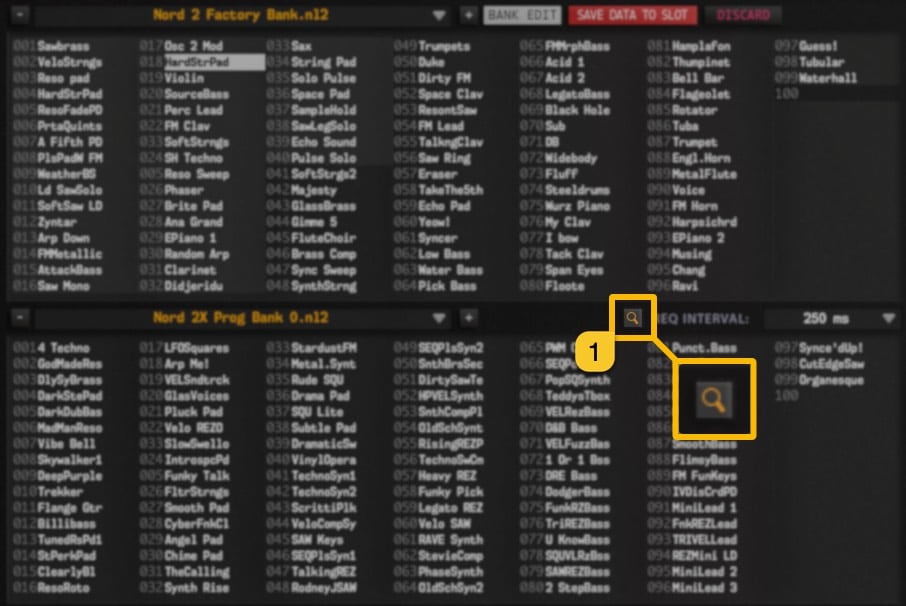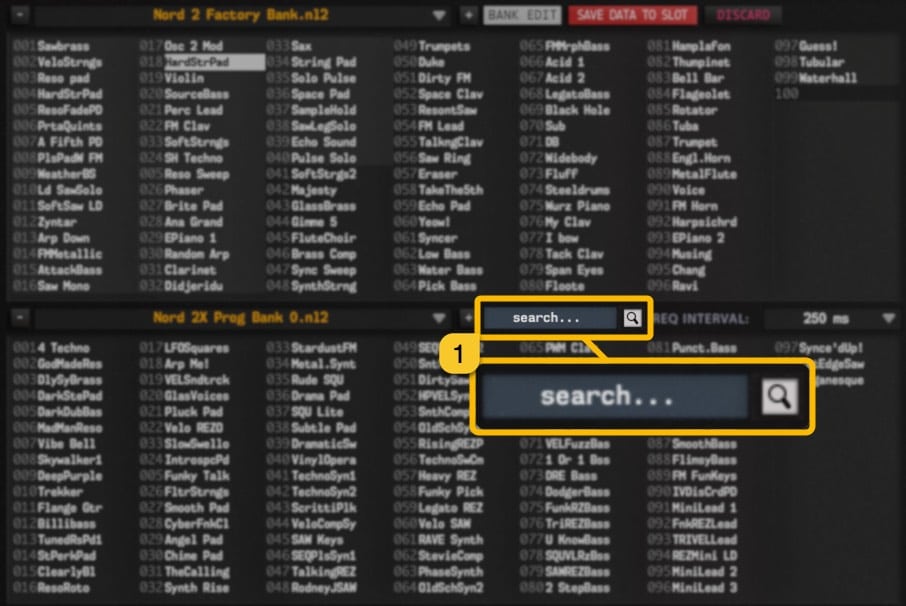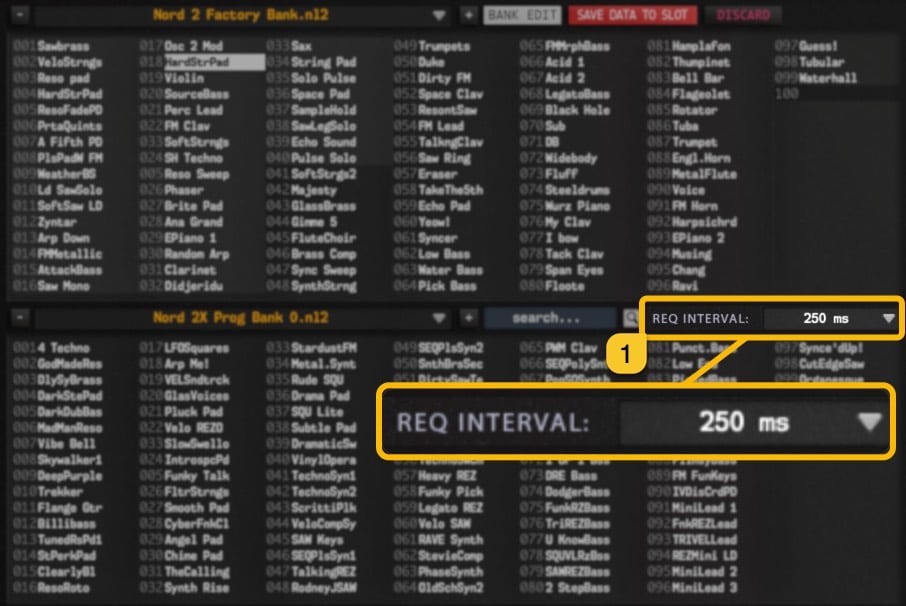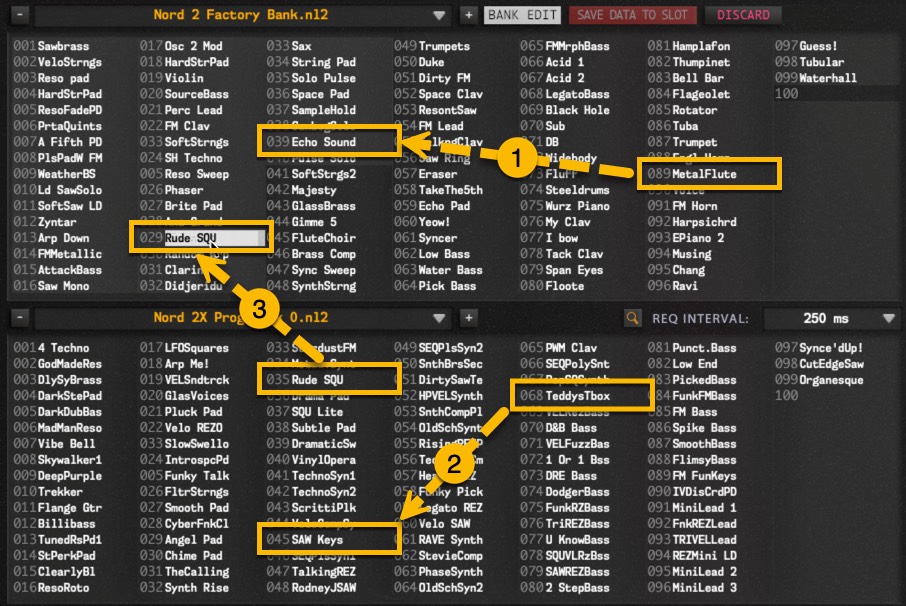Everything you need to know about our product install, setup steps, configuration and usage of various features
Using the Patch Librarian
In this chapter, we are going to walk through the usage of the Patch Librarian and all its functions & possibilities. It might take some time to understand how it works, but for those who used Emagic SoundDiver in the past, this workflow is pretty much the same.
We have made the librarian look and feel the same across all our products. i.e., Waldorf Blofeld Editor has the same functions in the librarian, with some additional features like ability to import microQ and Q banks in the librarian.
But in general, you can request data from hardware to the librarian, store data from librarian to hardware, store banks to HDD as you make edits etc.
NOTE #1: Librarian view is not synchronized with hardware memory. Librarian view displays PROGRAM or PERFORMANCE data stored in your HDD ( [data folder]/Patches/ -folder ).
NOTE #2: Keep your banks organized. If you have too many levels in your folder tree, librarian is not able to solve it. Detail below.
- [data folder]/Patches/sub folder 1/sub folder 2/my bank.mid – this is OK.
- [data folder]/Patches/sub folder 1/sub folder 2/sub folder3/my bank.mid – this is NOT OK.
There is a lot to cover in this chapter, so it is perfect time to get some coffee or tea.
Let’s dive in!
BASIC LAYOUT AND FUNCTIONS
Let’s start with the definitions of basic layout and button / menu explanations.
- [1] & [12] = Select previous PATCH or PERFORMANCE bank from the bank tree.
- [2] & [13] = Display popup menu of PATCH or PERFORMANCE banks. Menu displays banks from data folder.
- [3] & [14] = Select next PATCH or PERFORMANCE bank from the bank tree.
- [4] = Open Bank Edit menu, with most of the available request, write and other utilities.
- [5] = Save data from currently selected part TO selected librarian slot.
- [6] = Display PROGRAM or PERFORMANCE mode programs in the librarian window.
- [7] = Load Singles Program To Selected slot.
- [8] = Deprecated function.
- [9] = Sync Data From Hw function was explained earlier in the manual.
- [10] = Push Data To Hw function was explained earlier in the manual.
- [11] = Control Library via MIDI or via Program Change buttons.
- [15] = Toggle on Search function. Search results will be shown in the lower data view.
- [16] = Request Interval – Adjust request interval if you get time-out messages while requesting data.
- [17] = Upper data view, also used as EDIT BUFFER. Data can be edited only in the upper data view. Double click any entry to send the data to currently active part.
- [18] = Lower data view. This view can be changed while upper data view is locked due to unsaved data changes. Double click any entry to send the data to currently active layer.
Now that we understand the basic layout, we can dive into more specific details per function.
Send PROGRAM or PERFORMANCE to hardware
Double click with Mouse
Sending data from Librarian to hardware is quite simple. Double click [1] any entry from upper or lower list and it will be sent to selected slot [2].
This data is sent to hardware edit buffer. It is not written to hardware memory. This also updates the software interface, so you are in sync with parameters on both ends.
Computer keyboard Arrow keys
You can also use keyboard arrow keys to select programs. This works only when mouse cursor is over the upper or lower list view.
- Arrow down will select patch below the current patch.
- Arrow up will select patch above the current patch.
- Arrow left will select patch left to the current patch.
- Arrow right will select patch right to the current patch.
Plug-in Program Change
Changing librarian programs with INC [1] or DEC [2] buttons works too, but only when LIB CONTROL [3] is toggled on. Data is changed on currently selected Slot [4].
Program Change via MIDI
Program changes via MIDI will select corresponding patch from the librarian and send it to the hardware as well. i.e., Program Change 15 will send patch from slot 15 to the hardware.
TIP #3: Programs are sent to hardware based on the currently active list. Active list is the one which has the white box around the program name.
Selecting Previous or Next Bank
Use – [1] or + [2] to select between previous and next bank from the HDD. You can also select bank by clicking the bank name [3] area. This will show a pop-up menu with all compatible banks in the Patches folder. Both lists behave the same unless Search filter is on.
TIP #4: You can use the lower data list if upper data list view is locked due to unsaved edits. This is handy if you want to combine patches from different banks to your personal favorites bank.
TIP #5: You can also change bank from the main control display area if Librarian Control on Program Change is toggled on as mentioned earlier.
Librarian View
LIBRARIAN MODE [1] button allows users to toggle between Performance / Single Program files in librarian view. Performances contains Slot Programs and some additional settings, making it performance. You can also toggle the mode from the main user interface button to toggle between the modes.
When SINGLE PATCH mode is chosen, you can load individual programs to chosen slot.
Save Data to Slot
With SAVE DATA TO SLOT [1] you can quickly get data from the plug-in user interface to the librarian. Data will be put to an active librarian slot on upper edit window. If lower data view display is chosen, this function will not be available. Once the data is in the chosen librarian slot, you can then save the bank, rename the patch / performance or discard your changes.
Upper list bank – / + and bank drop down menus are disabled, until changes are saved or if you DISCARD [1] to trash your changes.
You can continue browsing between different banks with the lower data view if you wish.
Search Filter
You can search patches from the entire patch catalogue based on your search terms. Activate search function by clicking the magnifying glass [1].
Once Search icon is toggled on, search field [1] is shown.
In order to perform a successful search, type in at least three characters to get some results. Search results are then shown in the lower list and selecting patches happens like mentioned earlier. You can also copy and paste search results to upper list as you wish.
If search term gives you multiple banks or results, you can view them by choosing different bank with – / + buttons or bank select drop down menu.
Toggle of magnifying glass to display normal data in the lower data list.
Request Interval
If under any case you run into a situation where our plug-in constantly scans for different Device IDs while it is requesting data from the hardware, it might be wise to increase the Request Interval [1] by next value.
This could happen due to bad MIDI or bad driver for the specific MIDI interface.
You can experiment with the Request Interval setting yourself. What we have set as a default is good starting point.
Upper Data View
Upper [1] and lower data list views has different function in the plug-in behavior. Upper list acts as an edit buffer or “destination” for your bank editing.
Here is what you can do:
- drag and drop data from lower list slot to upper list slot.
- copy data from lower list slot and paste the data to any of the upper list slots.
- rename any single patch or performance program in upper list view.
- initialize single slot from upper list view or initialize the entire bank at once.
Here is what you cannot do:
- drag and drop data from upper list to lower list.
- drag and drop data from upper list to upper list.
Lower Data View
Lower [1] data list acts as a “source” & search results display area. What this means is that if there are on-going edits in the upper list view, you can still browse lower list to select different programs from different banks.
You can also initiate search for a certain patch from the entire catalogue, even when bank editing is active.
Drag and Drop Examples: 3 is OK – 1 and 2 are not going to work

